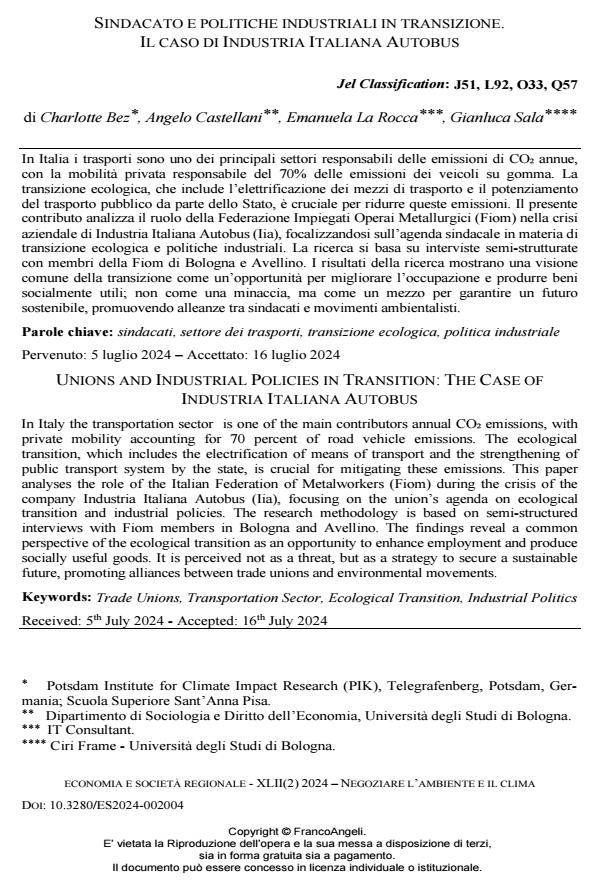Sindacato e politiche industriali in transizione. Il caso di industria italiana autobus
Titolo Rivista ECONOMIA E SOCIETÀ REGIONALE
Autori/Curatori Charlotte Bez, Angelo Castellani, Emanuela La Rocca, Gianluca Sala
Anno di pubblicazione 2024 Fascicolo 2024/2
Lingua Italiano Numero pagine 19 P. 41-59 Dimensione file 420 KB
DOI 10.3280/ES2024-002004
Il DOI è il codice a barre della proprietà intellettuale: per saperne di più
clicca qui
Qui sotto puoi vedere in anteprima la prima pagina di questo articolo.
Se questo articolo ti interessa, lo puoi acquistare (e scaricare in formato pdf) seguendo le facili indicazioni per acquistare il download credit. Acquista Download Credits per scaricare questo Articolo in formato PDF

FrancoAngeli è membro della Publishers International Linking Association, Inc (PILA)associazione indipendente e non profit per facilitare (attraverso i servizi tecnologici implementati da CrossRef.org) l’accesso degli studiosi ai contenuti digitali nelle pubblicazioni professionali e scientifiche
In Italia i trasporti sono uno dei principali settori responsabili delle emissioni di CO2 annue, con la mobilità privata responsabile del 70% delle emissioni dei veicoli su gomma. La transizione ecologica, che include l’elettrificazione dei mezzi di trasporto e il potenziamento del trasporto pubblico da parte dello Stato, è cruciale per ridurre queste emissioni. Il presente contributo analizza il ruolo della Federazione Impiegati Operai Metallurgici (Fiom) nella crisi aziendale di Industria Italiana Autobus (Iia), focalizzandosi sull’agenda sindacale in materia di transizione ecologica e politiche industriali. La ricerca si basa su interviste semi-strutturate con membri della Fiom di Bologna e Avellino. I risultati della ricerca mostrano una visione comune della transizione come un’opportunità per migliorare l’occupazione e produrre beni socialmente utili; non come una minaccia, ma come un mezzo per garantire un futuro sostenibile, promuovendo alleanze tra sindacati e movimenti ambientalisti.
Parole chiave:sindacati, settore dei trasporti, transizione ecologica, politica industriale
Jel codes:J51, L92, O33, Q57
Charlotte Bez, Angelo Castellani, Emanuela La Rocca, Gianluca Sala, Sindacato e politiche industriali in transizione. Il caso di industria italiana autobus in "ECONOMIA E SOCIETÀ REGIONALE " 2/2024, pp 41-59, DOI: 10.3280/ES2024-002004